unit 1 AP micro
1/61
There's no tags or description
Looks like no tags are added yet.
Name | Mastery | Learn | Test | Matching | Spaced |
|---|
No study sessions yet.
62 Terms
PPC
a slope showing all combinations of two kinds of goods
Trade off
as you do more one one thing [fortnite] you sacrafice the other [math]
Opportunity Cost [o.c]
what you lose from a descision
[cost of your choice - benefits of your choice]
→ only counts from 1st option not 2nd
[e.g. job 1 coulda paid 20 and job 2 mighta paid 10]
a concave PPC
there is an increase in o.p.c
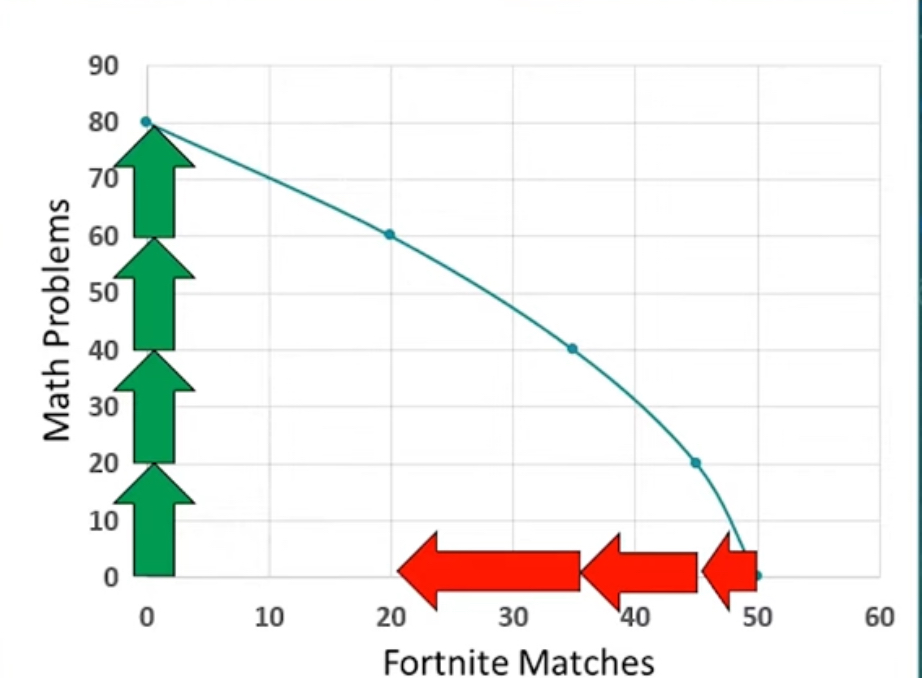
non-constant o.p.c
non-perfectly adaptable resources
→ occurs in concave slope
linear PPC
a constant rate of o.c being lost
perfectly adaptable resources
constant o.p.c
→ linear slope
Product efficient is in place
Points are on the line

inefficient production
Points are inside the line
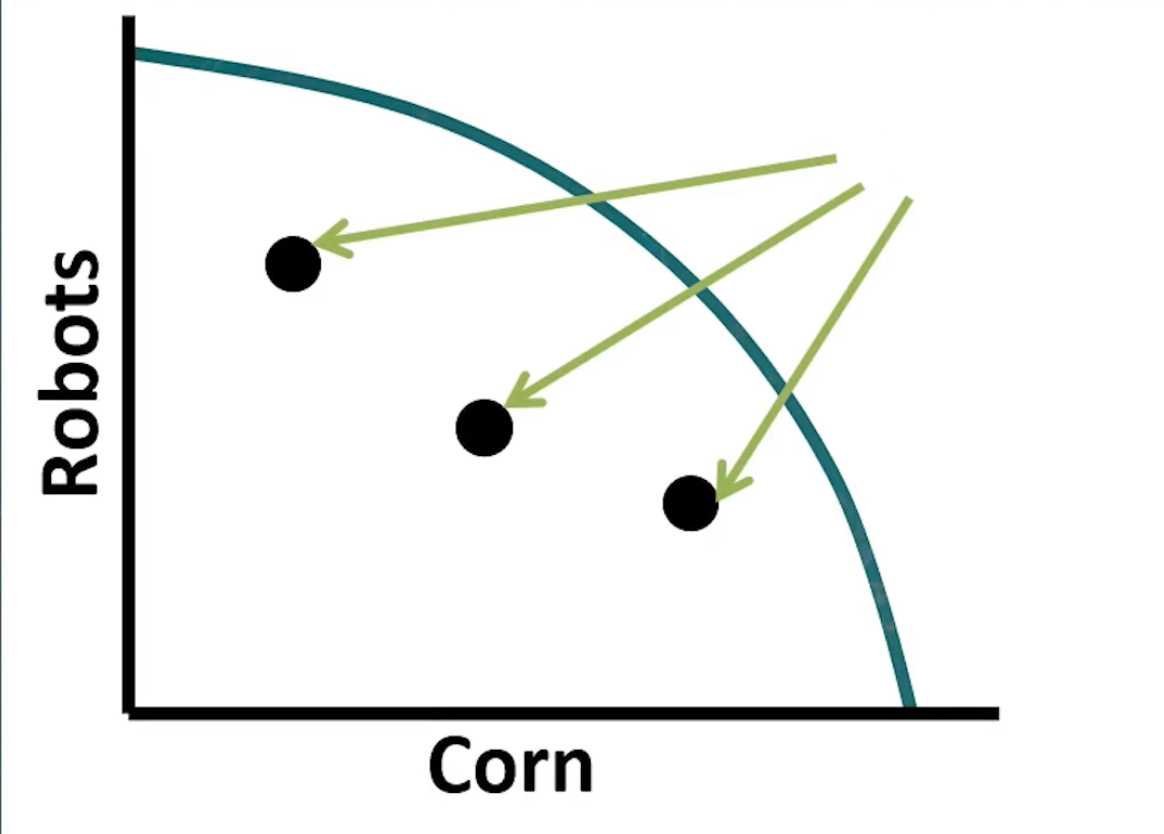
It’s out of the bounds of resource availability (impossible)
Dots are outside the line
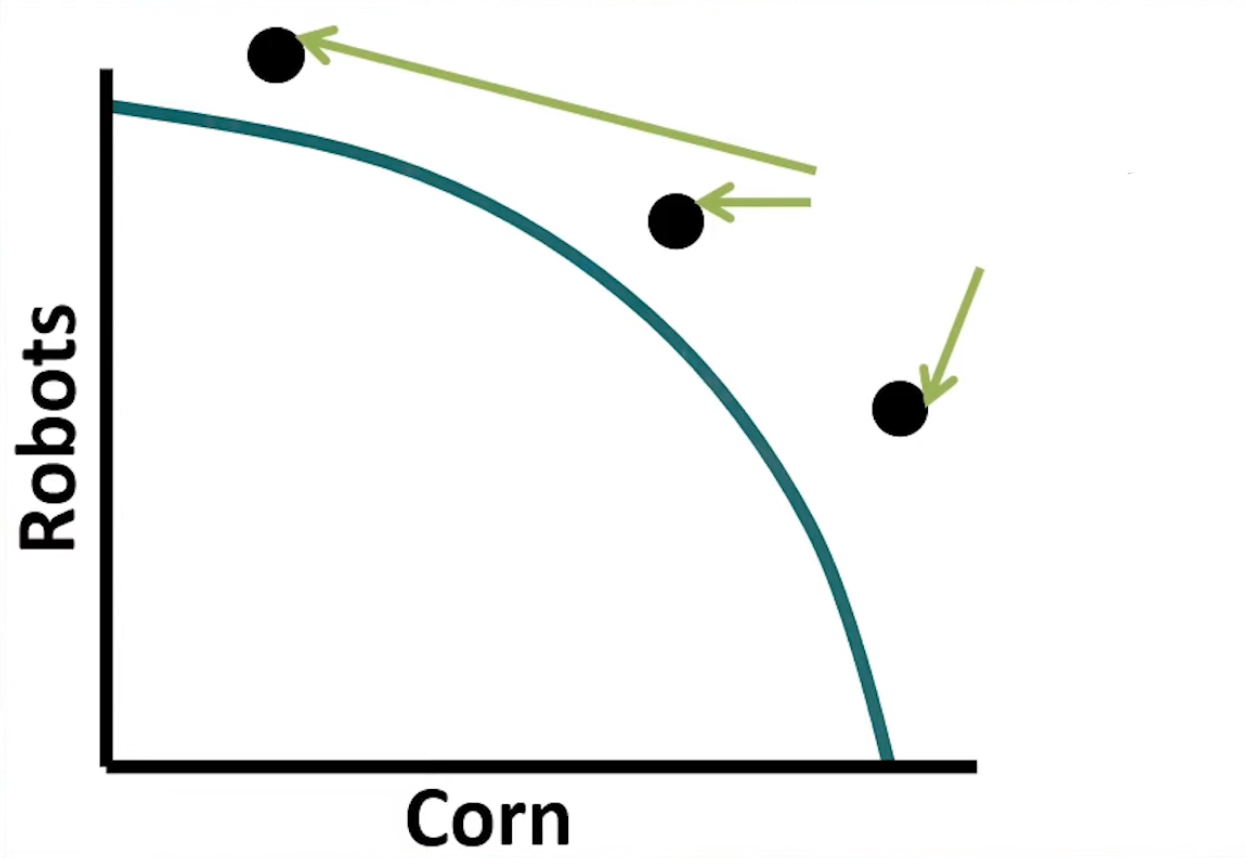
PPC Chart
A specialization in cake
Point shifts up or down to cake
“Unemployment/ recession” in PPC
Point inwards
“Short run” in PPC
point shift up or down
Loss of resources (e.g land, destructive war, no labor)
Shift inwards
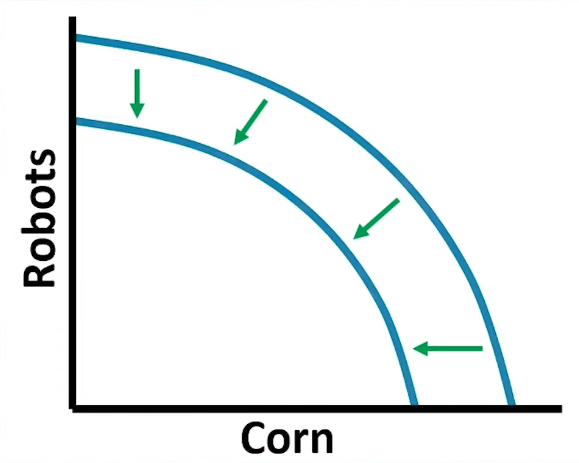
Improved tech for production
Shift out for a single source or both
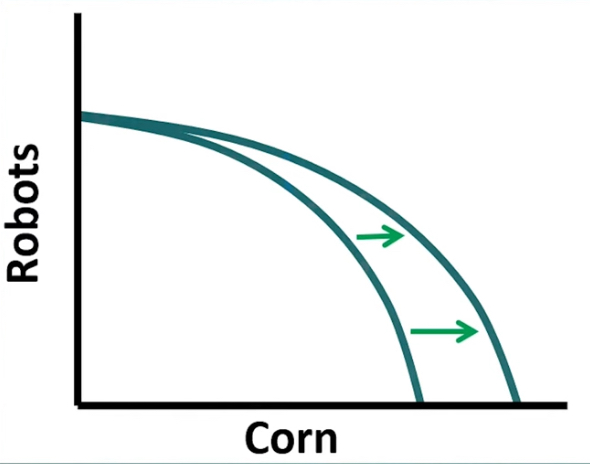
Increase in resources (e.g. captial goods/labor/land)
Shift out
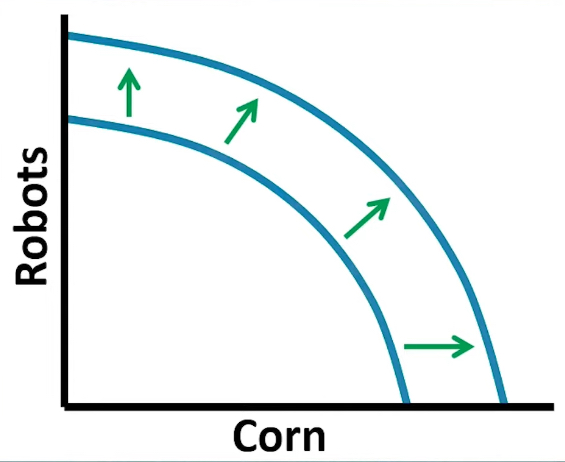
utility
satisfaction of a good or service from the consumer
Law of diminishing Marginal utility
satisfaction goes down as you consume each additional unit
Law of diminishing Marginal utility
Graph
MU decreases, TU increases at a decreasing rate.
→ when MU reaches negative numbers TU starts to decrease
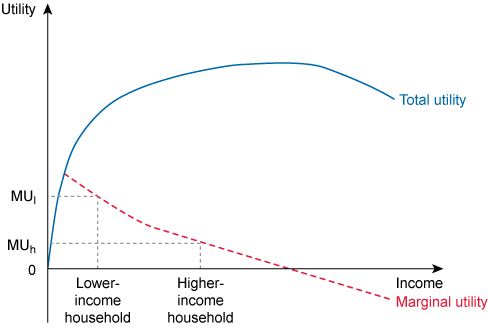
Utility Maximizing Combinations
formula and Definition
the combination of what you buy for the most amount of MU
MU[of product a] divided by its price = MU[of product b] divided by its price
MU of a sandwich is higher than the soda
how would u answer this
You want more of sandwich [higher MU] and less of the soda [lower MU] bc more utility per dollar makes the most of youre money
MU maximizing combos with budget constraint
find the MU/$ first for each unit, then starting from one pick which is the highest and decide the amount u paid for that MU
then proceed just like that until you reach the max amount of dollars you have
[e.g. $6 budget = two .50$ bananas, one apple 1$, two oranges 2$ ]
Absolute advantage
given country A and B produce two kinds of goods
Input table
“takes __ to make” or “requires labor/resources”
→ it has resource requirments
output table
“produces __ per__” or “can make __ per acre”
→ is consistent of production resualts
Finding Absolute advantage
in an output table → determine the bigger #
in an input table → determine the smaller #
to find comparative advantage
will always be the smaller #
[think c for constant]
finding the o.c of each table
output→ other/ it [o for other]
input → it/after [i for it]
determining whether the country benefits in trade
benefit mutually or individually
If two countries benefit mutually
Q: when do both countries benefit from 1 hr of mopping
find O.C of both countries
they both benefit when it falls into the range of the two o.c’s
ANS: when the vacuuming hrs are between 2-3
If one country Benefits Mutually
Q: includes a trade value above the o.c range of the two countries*
country with the comparative advantage = Benefits
other country = Hurt
If one country Benefits Mutually
Q: includes a trade value below the o.c range of the two countries*
country with comparative advantage = Hurt
other country = Benefits
Allocation systems
are competative and on a first come first serve basis
Economic Systems
“what, how and for whom do we produce”
Traditional
Market
Command Economies [socialism]
Traditional systems
what, how and for whom products are made for is answered by cultural custom
[e.g. Amish/indigenous]
Market systems
what, how and for whom products are made for is answered by individuals
[e.g. private property, buyers and sellers, private ownership of resources = ALL basically capatalism]
Command systems [socialism]
what, how and for whom products are made for is answered by central planners
[e.g. gov ownership of resources, government intervention and no enforcement of property rights
= public schools, parks, roads ]
Marginal
change in total / change in Q

Margin vs Total
total is increasing at a decreasing rate/slope
Margin is positive and decreasing

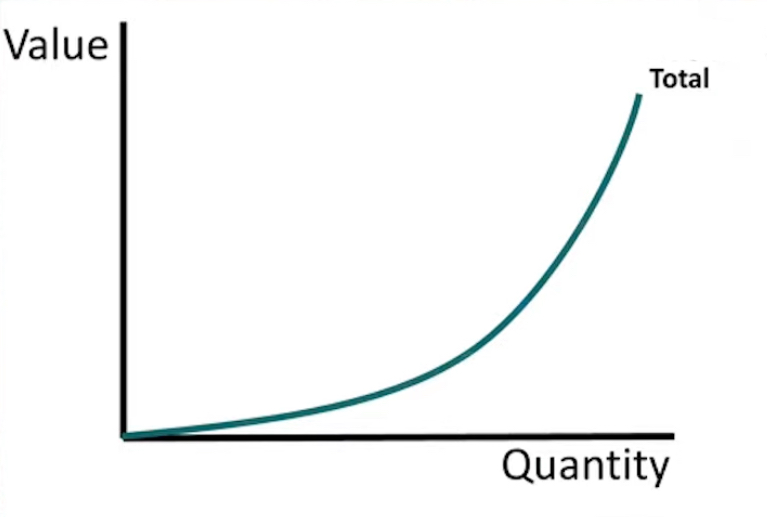
Margin vs Total
total is increasing and so is the rate
margin is positive and increasing
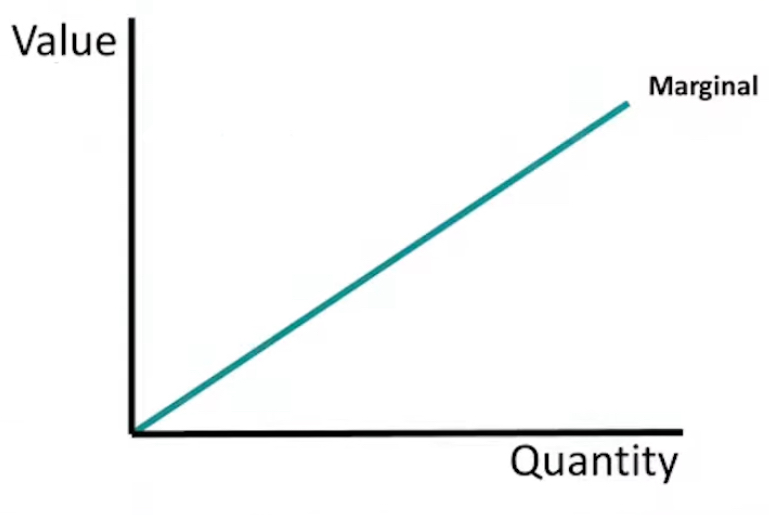
Margin vs Total
total is increasing at a constant rate
Margin is positive and constant
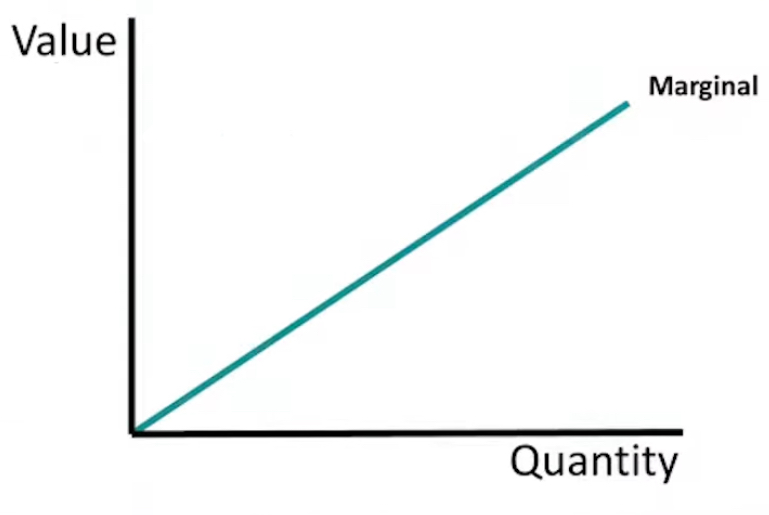
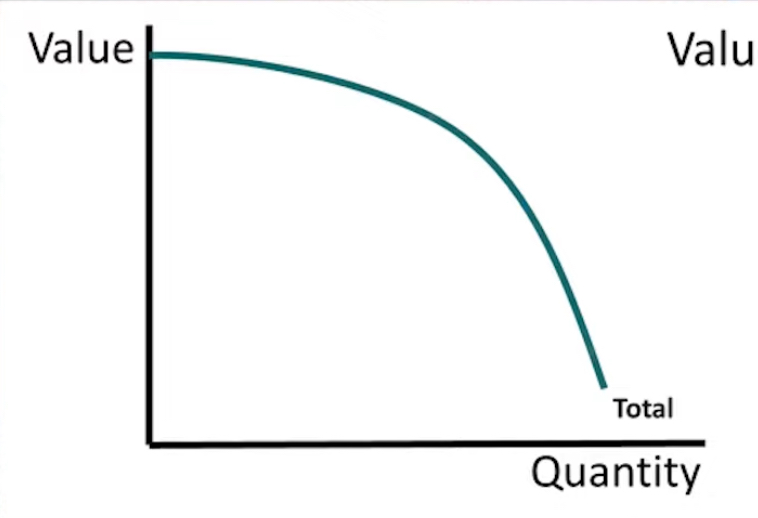
Margin vs Total
total is decreasing
Margin is negative
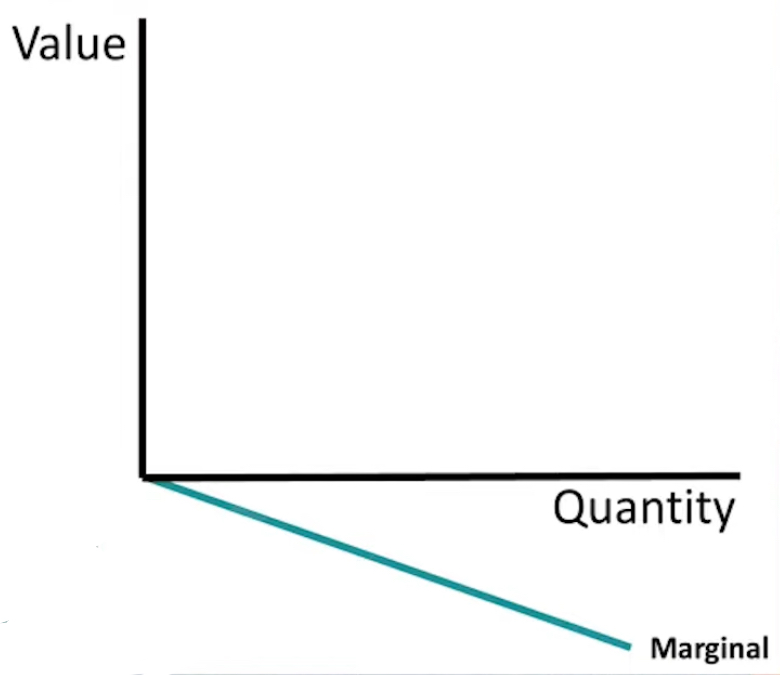
Marginal Benefit
change in total benefit

Marginal Cost
change in total cost
[conceptually its like o.c]
![<p>change in total cost</p><p>[conceptually its like o.c]</p>](https://knowt-user-attachments.s3.amazonaws.com/fa7fc775-6e8d-4f07-b539-f27cc8f71428.jpg)
Benefit maximizing Behavior
when Marginal Benefit = Marginal Cost

Benefit maximizing
act when
MB > MC
Benefit maximizing
Dont act when
MB < MC
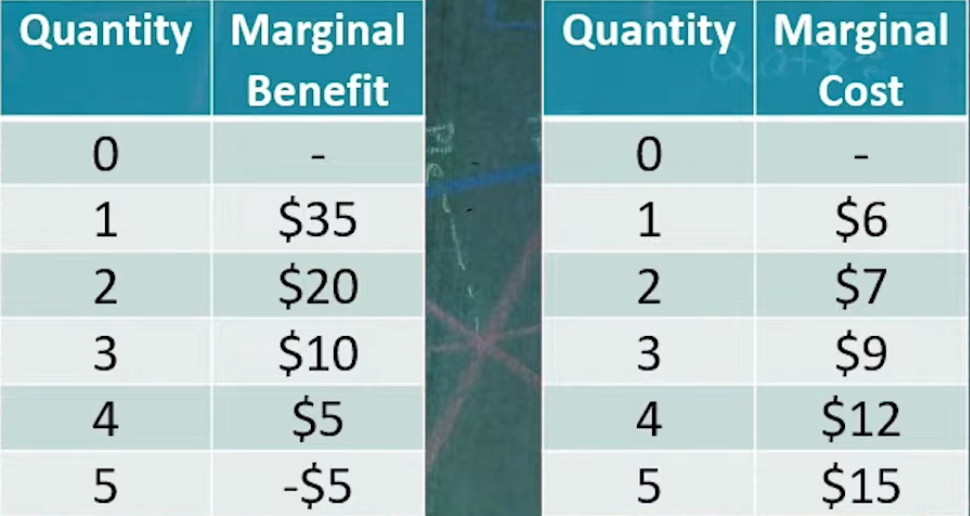
Benefit maximizing
When do we act in this chart?
ANS AS: at Quantity 3, bc 10> 9 [we want]
and 5< 12[we dont want]
MB = MC on a chart
at Qe
Scarcity
inability to satisfy unlimited wants due to limited resources
An item is NOT scare when
theres a negative price [producers pays to rid of it]
obtained without a price
knowlege that is already established
Resource Trade Offs
as Apple uses all their chips to make phones = less chips are used to make laptops
Scarcity vs Shortage
scarcity → less available than ppl desire
shortage → Quantity supplied is less than demand at current price; theres a price increase or we ran out
comparative advantage
Who exports/imports the good?
the one with comparative advantage = exports
the item/country without the comparative advantage = import
is it scarce?
yes if it
1. has a positive price
system of allocation
less available then wanted
has a o.p.c
PPC
specalization and trade
increases the PPC [production] making it possible to have a point outside the line
TVC second formula
add each MC needed
TC second formula
TVC [secondkind] + fixed cost
Ruling of this formula [perfect optimization]
MU[of product a] divided by its price = MU[of product b] divided by its price
purchasing an item as long as u can afford another util should consist of:
Picking the higher MU/P
no longer purchasing bc we have reached optimization
Which of the following economic systems primarily relies on prices for allocating resources and goods
free market
Mixed System
using both central planners and private owners
implicit cost types
lost job opportunities [only the 1st]
Renting u missed out on
money u invest in ur/others’ company rather than somewhere else